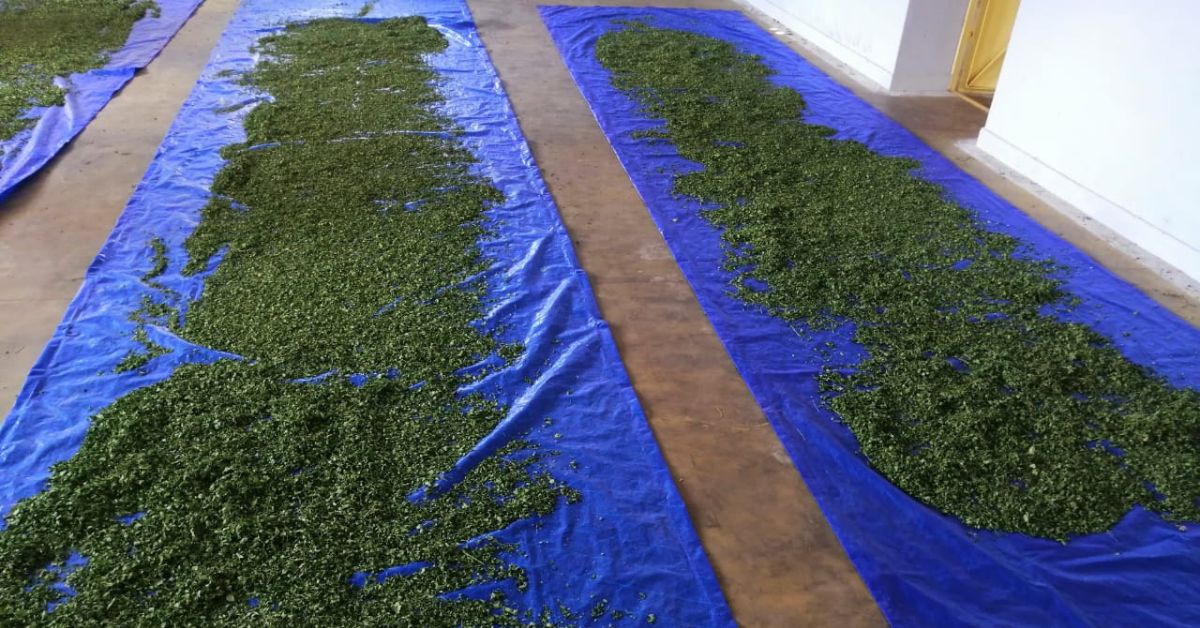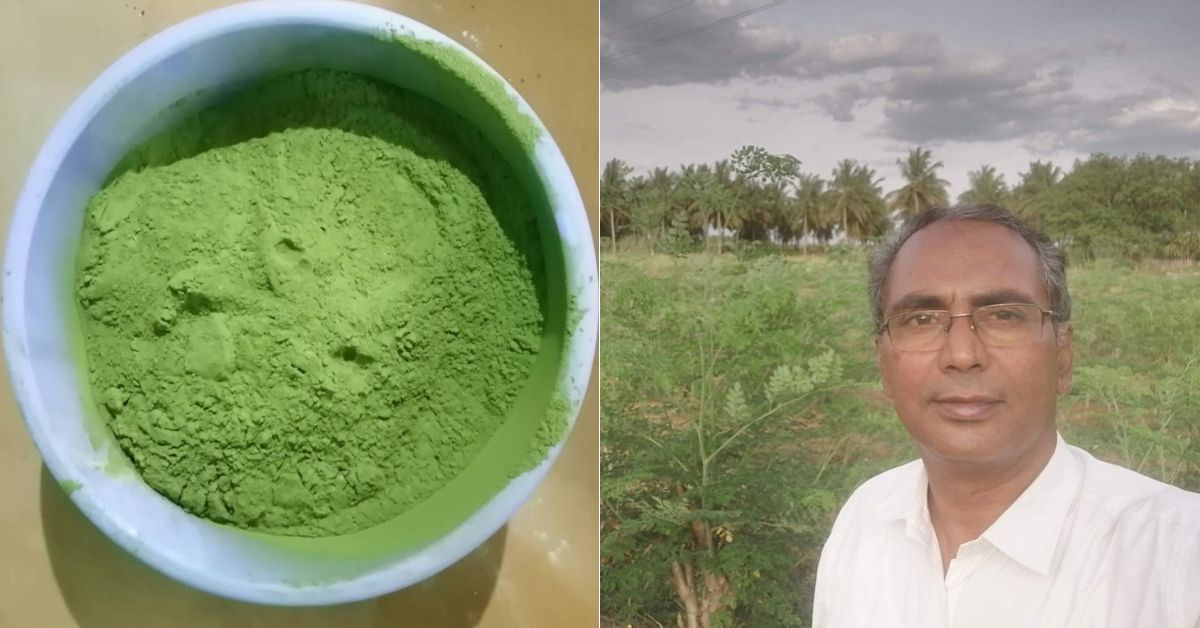In Somankottai village of Tamil Nadu’s Tiruppur district, Dr Kandasami Saravanan has created a lush green haven of moringa oleifera on four acres of land. Departing from conventional practices of waiting for the trees to bear drumsticks, Dr Saravanan opts to quickly harvest its leaves.
For decades, his family had been cultivating moringa for harvesting drumsticks. However, the crop was becoming increasingly unprofitable and unsustainable owing to low market rates.
“For drumsticks, farmers earn between Rs 100 and Rs 150 per kg. But during peak production, the price reduces to as low as Rs 5 per kg. I observed moringa farming was becoming unprofitable for farmers despite its nutritional benefits,” he shares.

“I learnt that the excessive supply of drumsticks resulted in low market rates, whereas its leaves were in much higher demand in the international market. So, I decided to switch to moringa leaves farming,” he adds.
With just moringa leaves, Dr Saravanan has set up a profitable venture by processing them into value-added products such as moringa podi, leaf soup, and powder.
Selling at over Rs 800 per kg, the former soil scientist has successfully tapped into an international market base in the USA, Canada, Europe, and several Gulf countries.
From research to roots: The start of a venture
Dr Saravanan has over two decades of experience in soil science and agricultural chemistry. This, coupled with his deep-rooted connection to nature and his family’s farming background, allows him to maintain a thriving business model that resonates with environmental conservation and economic empowerment.
After years of dedicated research and academic pursuits, Dr Saravanan realised that his true calling lay in the field, where he could directly apply his knowledge and expertise to conserve soil health and promote natural farming techniques.
In 2017, he took the bold step of resigning from his prestigious position at the Tamil Nadu Agriculture University, where he had worked as a soil scientist for about seven years. The decision was not an easy one. Dr Saravanan’s father initially opposed his choice, but his unwavering determination and vision for change kept driving him forward.

Embracing the principles of zero-budget natural farming, Dr Saravanan dedicated himself to promoting sustainable agriculture practices that not only enhance soil health but also uplift agriculture income.
Returning to his roots in Tamil Nadu, he chose to revive his family’s farming legacy by focusing on cultivating moringa oleifera — a versatile tree known for its nutritional and medicinal properties.
Redefining moringa farming with sustainable practices
Highlighting the difference between farming techniques for harvesting drumsticks and leaves, Dr Saravanan says, “In drumstick farming, trees are planted with a wider spacing of 15 feet, whereas in its leaves cultivation, saplings are planted closely together. The leaves are cut when the tree reaches a height of two feet.”
“If you allow the tree to flower, the nutrition stored in the leaves will be used up to grow the drumsticks. This will result in lesser-quality leaves. That’s why I harvest the leaves before the flowering phase. Also, you can harvest leaves up to six times at 50 to 60 day intervals. This ensures year-round production,” he explains.
Dr Saravanan uses no-till cultivation to grow the moringa leaves. He implements organic farming practices using goat manure and farmyard waste. Additionally, he has also installed drip irrigation to ensure crops are grown without any wastage. To maximise production and suppress weed growth, he uses a new technique called bundle mulching, where crop residues, such as dry leaves are stacked along the crop rows to suppress weed growth.

“Using conventional mulching methods, I was unable to control weed growth. Its impact hardly lasted for two months. Meanwhile, the weed started growing again, so the major problem for which the mulching is done was not taken care of,” he says.
“Accidentally, I had put a one-foot bundle of leaves along three rows in the field. After some time, I found it was very effective in checking weed growth. This controlled the weed growth for six to eight months. More importantly, it improved soil quality by making it more porous and allowing roots to grow easily,” he adds.
Dr Saravanan says the crop residues also decompose and release nutrients, resulting in fewer pest attacks and diseases. “It also improves the carbon/nitrogen ratio in soil. So it was an overall improvement,” he informs.
Driving profits, harvesting happiness
The 54-year-old scientist-turned-farmer has redefined the concept of moringa farming as a harmonious blend of science and nature. By shade-drying moringa leaves, he transforms them into a wide range of value-added products, such as powder, capsules, and soups.
With this, he earns a net profit of up to Rs 40,000 every month. “By investing Rs 1 lakh per acre, farmers can fetch up to Rs 1.25 lakh annually just by selling their leaves. If they venture into value addition, they can earn up to Rs 2.5 lakh to double the profits,” he says.
By leveraging his expertise in soil science and agriculture, Dr Sarvanan has not only transformed the fortunes of his family farm but has also created a thriving business model that resonates with environmental conservation and economic empowerment.
“I am very happy now and at peace within myself. Initially, I faced a lot of struggles as I had to invest almost Rs 1 crore in cultivating the farm. But now I am getting the fruits of my struggles. I went against my family when I quit my job at the university,” he says, adding, “But when you really do what you love, you feel rewarded at the end.”
Edited by Arunava Banerjee. All photos: Dr Kandasami Saravanan.
No comments:
Post a Comment